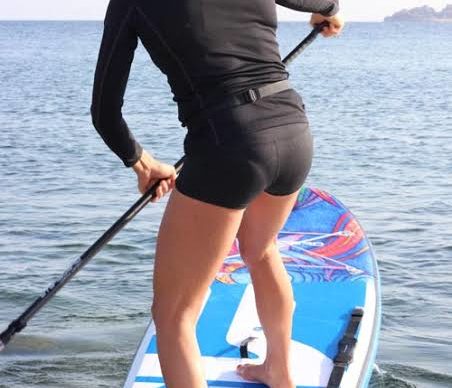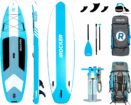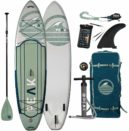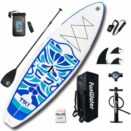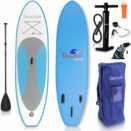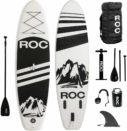Many people who are new to the sport of paddleboarding might be wondering if it gives shoulder pain and back problems. For stand-up paddleboarders, the back and shoulders are the most common areas that become irritated. Of course, your abdominals and quads will ache when first starting, but this is due to those muscles strengthening and building and not a sign of injury.
The spine and shoulder joint, on the other hand, are highly complex structures that perform equally complex tasks. Because of this, they are more prone to develop glitches if the musculature is not supporting them adequately, or they are being forced to move in ways contrary to their natural operation. Quite often, the latter is caused by lousy paddling technique and posture.
Posture
If you have a day job that requires you to sit in front of a computer screen for hours on end, it is very easy to slouch forward without even noticing it. The key is to correct that posture as soon as you realize it. The natural position for your back is to have all the vertebrae stacked directly on top of each other.
It is also essential to keep a straight back when you are paddling. When you bend forward into the catch phase of your stroke, make sure that you bend from the hips while keeping your lower back and shoulders aligned, not slumped over your feet. Also, it is always a good idea to hold your head up as much as possible. Focus on keeping your line of sight on the horizon, or directly in front of you.
Use Your Whole Body
When you begin your forward reach to plant your blade in the water, you should be extending your hip, torso, and knee along with your arm. Only extending your arm puts undue stress on the shoulder in the same way that hunching over your board will place more burden on your lower back. The idea is to bring your entire body into play so that not just one area of it is carrying the whole load.
This technique not only saves shoulders and back from undue stress, but it is also the most efficient and powerful way to paddle. But it is best to keep in mind not to lift your top hand above shoulder level. Instead, keep it at or just below shoulder level. Many shoulder injuries are caused by raising the hand high in the air during the recovery and power phases.
Your stroke should begin by moving your hip (the on the side you are paddling on) forward as you reach out with your lower arm keeping elbows straight and unbent. Your shoulder on that side will also follow your hand ahead; it’s also best to keep your knees slightly bent at all times. Remember, the lower you are to the board, the more stable you will be, and your balance will remain consistent even as you ride through bumpy conditions.
As you plant the blade in the water, push down on the handle with your top hand. Forcing the blade down in this fashion will make it easier to start your counter-rotation. At this point, you will move your top hand shoulder forward, driving the energy into the handle at the same time your hip will turn in the direction of your stroke. This will engage your incredibly powerful core muscles, and take the stress off of your back and shoulders.
Applying these techniques will save you from pain and injuries, helping to keep your paddling adventures safe and more enjoyable. After all, paddleboarding is both a sport and a fantastic recreational activity that promotes health and fitness, while allowing you to see what the oceans, rivers, and lakes have to offer. And what better way to enjoy this time than with your family and friends, without any added worries.
